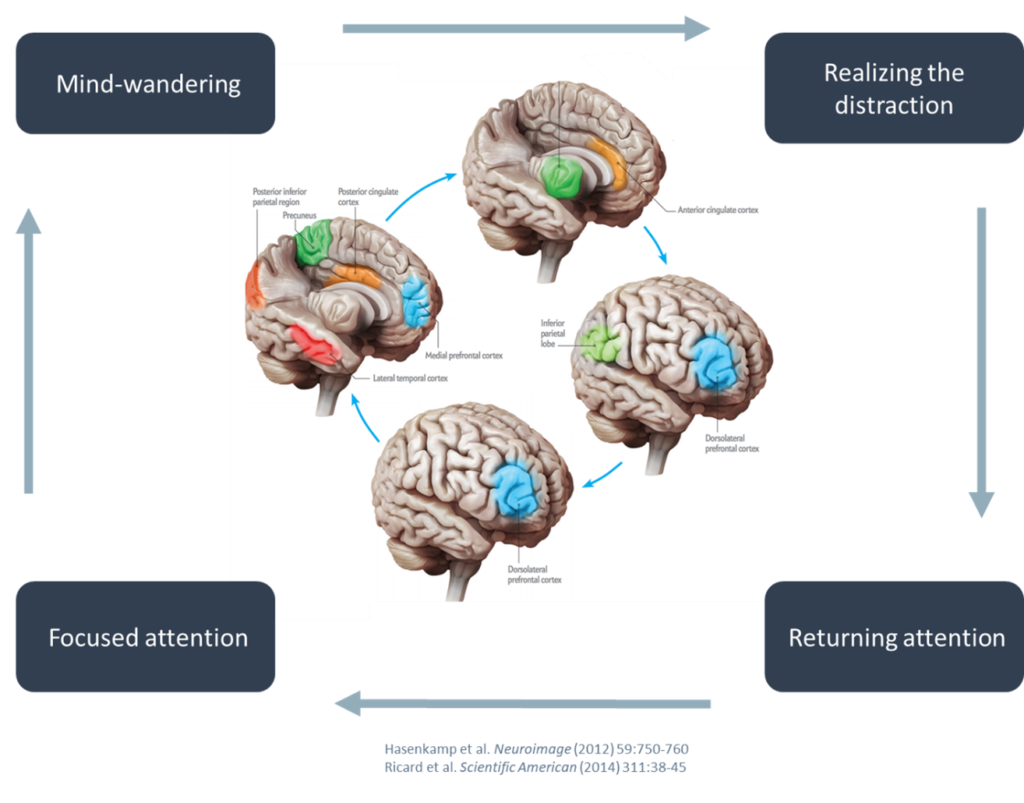23 September 2024
Joakim Eriksson, former Client Director

Given what our work life looks like, interest around this question has grown in the research community; how can we train ourselves to be more present, focused and effective?
One answer to this question has been shown to come from an unexpected source; the ancient practice of meditation. Historically, meditation may have been related to spiritual traditions, but over the last decades, and thanks to contemporary science, meditation is now moving into the mainstream as a totally secular practice.[1]
There have been thousands of scientific articles published on the effects of meditation, and there are many different meditation techniques. The one most known and used today is so called ‘mindfulness’ meditation. Even if the term mindfulness runs the risk of being overused, it just means being present and attentive to what is going on.
In an always-on reality where it is very easy to be distracted, training our ability to be present and focused is more important than ever. Mindfulness meditation has been shown to be a very effective technique to improve our ability to get into a mindful state of mind.
When we train mindfulness, we are practicing two of our mental faculties:
Laser sharp focus without the ability to be aware of what is happening in our surrounding environment can lead to tunnel vision. We need the wider awareness to be able to discern what is most important for us to direct our attention to at any given moment.
On the other hand, being highly attentive to the world around us, without the ability to focus in on the task in front of us can make us easily distracted and ineffective.
The core idea of mindfulness (or attention training, as you can also think of it) is therefore to practice both these mental ‘muscles’ in parallel.
So how do we do this? We start by simply choosing an object to rest our attention on. It can be a picture, a sound or a physical sensation, such as our breath. Once you have chosen the object for your attention – let’s say your breath – the first part of your practice is to just rest your attention on the sensation of breathing.
After a few seconds, your mind will start wandering, and that is not a problem. Actually, that is what our minds do naturally. On average, we can focus our attention for somewhere between 5 and 15 seconds before our thoughts start wandering. This is just to be expected. However, it is the next move that is the key to the practice.
The moment you realise that your mind is wandering, congratulate yourself on detecting that, and kindly but firmly return your attention to your breath again. It will stay there for few moments before it wanders off again, and then you repeat.

This is just like doing reps in the gym. The more times you detect that your mind has wandered, and you bring your attention back again, the more you will strengthen the networks in your brain related to your ability to focus. Neuroscientists call this neuroplasticity. When neurons fire together, they wire together. Practicing regaining our attention again and again starts building new neural pathways and we get a stronger ‘attention muscle’.
Here are some tips when you do attention training:
When your bell rings and your practice is finished, take a moment to take stock of how you feel. Can you notice any difference in yourself, mentally or physically, compared to when you started the exercise?
You are not supposed to reach any special state – that’s not the point here – but chances are you experienced some sense of relaxation and clarity of mind. This would indicate that you have activated the parasympathetic nervous system and your body and mind have switched over to restitution mode for a moment.
The benefit of mindfulness training is that it enhances our ability to be both present and focused, while also helping us reset to a calmer state of mind[2]. In a hectic and always-on work environment, these can be useful skills to practice.
If you want to establish a regular mindfulness practice, there are plenty of apps for your smartphone that can be a helpful support. Browse around to find one that suits your temperament.
Research[3] indicates that just a few minutes of practice each day has positive effects on our wellbeing and ability to cope with stressful situations. If your work contains high pressure at times, this might be a practice you want to explore.